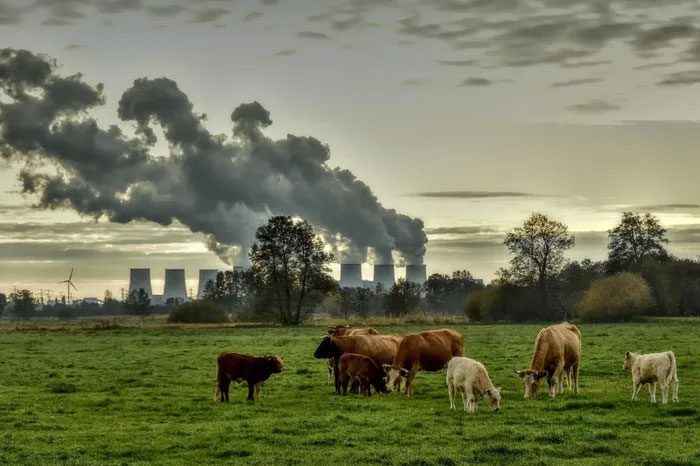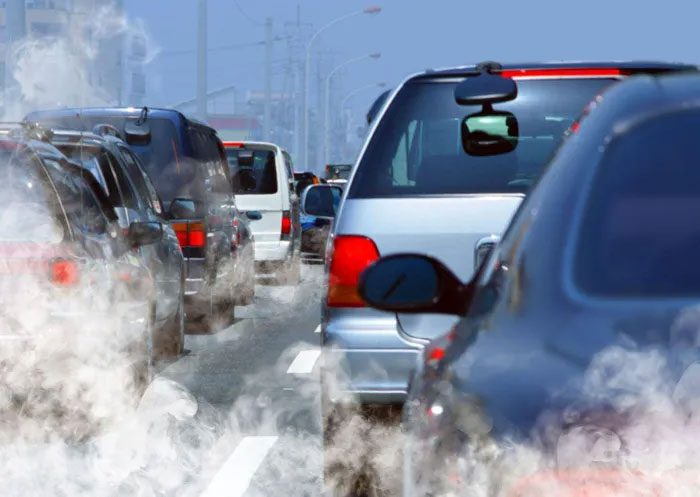Looking at the capital city of New Delhi shrouded in smog, we can clearly see how serious the air pollution issue is in major cities. So why is the city often more polluted in the morning? Let’s find out.
The Urgent Issue of Urban Pollution
We have often heard that “the air in the morning is the freshest”, and urban residents typically engage in exercise, running, and sports activities early in the morning. However, recently scientists have warned that in cities with developed industries and transportation, the morning air is not only fresh but is also heavily polluted.
Why do scientists come to a conclusion that contradicts the long-held beliefs of many people?
The level of air freshness is determined by the composition of substances in the air, especially those that are harmful to human health. During the day, sunlight increases air temperature, causing emissions from factories, vehicles, and dust to linger in the air. As the sun sets, the air temperature gradually drops.
Overnight, the ground cools down, and heat radiating into the atmosphere a few hundred meters above creates a layer of warm air above cooler air, resembling a pressure cooker. At this time, emissions from factories cannot rise high and disperse into the cloud layer but instead linger close to the ground, with concentrations becoming increasingly dense. If the ground is calm at this time, air pollution will intensify.
Therefore, scientists advise residents of industrial cities to shift their exercise and training times from early morning to around 10 AM and 3 PM for optimal health.
Why is Indoor Air Also Polluted?
Currently, many households in our country still use coal as a fuel. Coal stoves emit a significant amount of carbon dioxide; however, using gas or oil stoves indoors also contributes to carbon dioxide emissions. Additionally, cooking food releases greasy particles that pollute the kitchen air.

Nowadays, even indoors, we can inhale “polluted air.” (Illustrative photo).
Moreover, the current living conditions in cities are cramped, and human bodies continuously emit carbon dioxide and sweat, not to mention that smokers contribute a large amount of smoke, polluting the indoor air. In noisy or cold conditions, people tend to close windows (to block noise and cold), preventing harmful gases from escaping.
Newly used items in homes, such as plastic rugs, wallpaper, and plastic furniture, also bring indoor pollutants like toluene, methylbenzene, and formaldehyde. These chemicals are very harmful to human health.
If there are pets like dogs and cats and many flowers or ornamental plants in the house, they will further increase the levels of carbon dioxide and unpleasant odors. Dust and the aforementioned gaseous impurities constantly float in the air alongside various microbes, which can adversely affect human health.
To address indoor air pollution, it is essential to open many windows for ventilation, regularly clean the home, maintain personal hygiene, and avoid keeping pets indoors.
How Does Urban Air Differ from Rural Air?
In the summer, when traveling from the city to rural areas, we can distinctly feel the difference in air quality between the two regions. People living in the countryside are very proud of the fresh air in their environment. Scientists have studied and pointed out the fundamental differences in air between the two areas:
First: Urban air often contains more bacteria and disease-causing germs than rural areas due to the high population density in cities, extensive trade, and developed manufacturing and construction, leading to a large amount of waste that is dispersed and difficult to collect promptly, causing environmental pollution. People from different regions frequently interact, bringing pathogens from various places. Poor air circulation due to tall buildings also allows disease-causing germs to concentrate and survive longer.
In rural areas, the lower population density and reduced flow of people and goods result in less waste, primarily organic waste that can be used as fertilizer. The sparse population and abundance of greenery create a refreshing and pleasant atmosphere, with the ability to release antibacterial substances, consequently resulting in fewer disease-causing germs in the air.
Second: Urban air temperatures are higher than in rural areas, while humidity is lower. In the summer, urban air temperatures can be 2 to 6 degrees Celsius higher than in rural regions, with surface temperatures of paved and concrete areas being 5 to 8 degrees Celsius higher than air temperatures. This is due to poor air circulation in cities, which reduces heat dispersion.
The numerous motorcycles and cars, as well as many factories and manufacturing plants, release significant heat into the air. Bricks, concrete, and asphalt absorb solar radiation very well, heating up and radiating heat into the atmosphere. There is also less water body presence in the city, and the land covered by bricks, asphalt, and concrete does not allow soil moisture to evaporate, which neither dissipates heat nor maintains humidity.

Vehicle emissions are one of the causes of environmental pollution. (Illustrative photo).
In rural areas, on the other hand, the air is not obstructed, allowing for better circulation. There are significantly fewer artificial heat sources than in cities. With abundant trees, a good canopy prevents direct sunlight from heating the ground and also consumes some solar energy for photosynthesis. Both land and water surfaces evaporate well, reducing the amount of energy from sunlight.
Third: Urban air contains more dust than rural air due to the concentration of many factories and enterprises that emit smoke, dust, and toxic gases. Continuous construction, excavation, and transportation of materials create significant sources of dust. On city streets, motorcycles and cars frequently pass, crushing soil and sand and stirring up dust. The hot, dry air causes dust to remain suspended longer. The uneven surfaces of the city, with buildings of varying heights, also create whirlwinds that lift dust into the air.
Fourth: In cities, the engines of cars and motorcycles, as well as various activities related to production, trade, and entertainment, generate a lot of noise. Urban areas lack green belts that can block noise, with many buildings of concrete creating an echo that distorts sound, resulting in a chaotic and unpleasant auditory experience.
Fifth: Urban air, especially in industrial and transportation areas, often contains a high concentration of harmful gases such as sulfur oxides, nitrogen oxides, carbon oxides, and lead. These substances adversely affect human health and the environment, leading to diseases caused by air pollution.
In conclusion, urban air is typically much more polluted than rural air, which is detrimental to human mental and physical health. Many countries worldwide have been investing significant effort and resources in researching solutions to address the severe environmental pollution in major cities.
However, the issue cannot be resolved immediately. People living in densely populated urban areas need to understand the drawbacks of their environment to take protective measures and participate in the collective effort to safeguard the environment.


















































